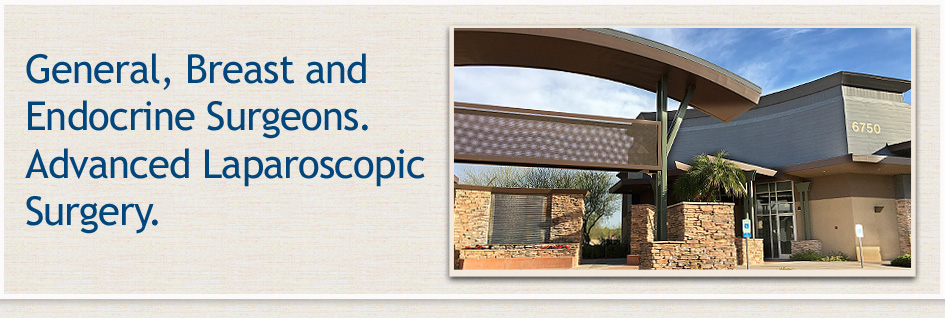Spleen Conditions
Your spleen is a small organ that functions as part of the body's immune system. Located under the left rib cage near the stomach, the spleen helps your body identify and destroy bacteria and fight infections.
You may need to have your spleen removed for various reasons. Illness, infection or injury that cannot be treated with non-surgical methods may require removal of the spleen. Also, certain blood disorders and cancers may require removal of the spleen (called a splenectomy). These include sickle cell anemia, idiopathic thrombocytopenic purpura (ITP), lymphoma, Hodgkin's disease, and leukemia.
Doctors Allen A. Agapay and Jordan J. Glenn are experienced in disorders of the spleen. When surgery is necessary, they use the most advanced surgical techniques to repair or remove a patient's spleen.
Symptoms
Symptoms of a spleen condition requiring surgery can be:
- Abdominal pain in the upper left abdomen
- Pain in the left shoulder and left side of the back
- Feelings of fullness in abdomen
- Fatigue
- Shortness of breath
- Frequent infections
- Bleeding disorder
Diagnosis
Tests for spleen conditions may include:
- Complete Blood Count (CBC): Checks the number of blood cells and platelets in your system
- Bone Marrow Test
- Ultrasound test
- CT scan: helps identify an enlarged spleen
- MRI: traces blood flow through the spleen
- Nuclear Medicine Scan: A radioactive tracer injected into a vein can help find cysts and abscesses.
Treatment
- Laparoscopic spleen surgery: Splenectomies can usually be performed as laparoscopic surgeries. During this procedure, your surgeon operates through small incisions in the abdomen using a laparoscope (thin tube with a tiny video camera attached) and tools to remove the spleen. This surgery is performed using general anesthesia. Because the incisions are smaller than in open surgery, most patients heal more quickly and have a shorter hospital stay.
- Robotic-assisted spleen surgery: This type of surgery is performed as the surgeon operates a robotic surgical system that gives precise instrument control and a magnified 3D view of the surgical area. Because this technology enables surgeons to operate through very small incisions, patients often have quicker and less painful recoveries.
- Open spleen surgery: If the spleen is too large to be removed laparoscopically, or if you have a lot of scar tissue or bleeding problems, your surgeon will operate in an "open" procedure with a single larger incision. This surgery is performed using general anesthesia.

Insurances We Accept
Click the "Learn More" link below for a full list of the insurance plans we accept. If you don’t see your plan on the list, or if you have any questions, please call us at 602-843-8317. Learn More

Arizona Advanced Surgery
Doctors Agapay and Glenn are proud to be a division of Arizona Advanced Surgery. Learn More



